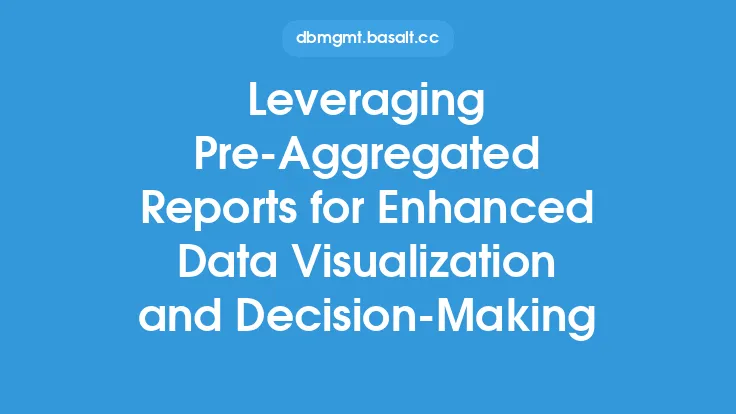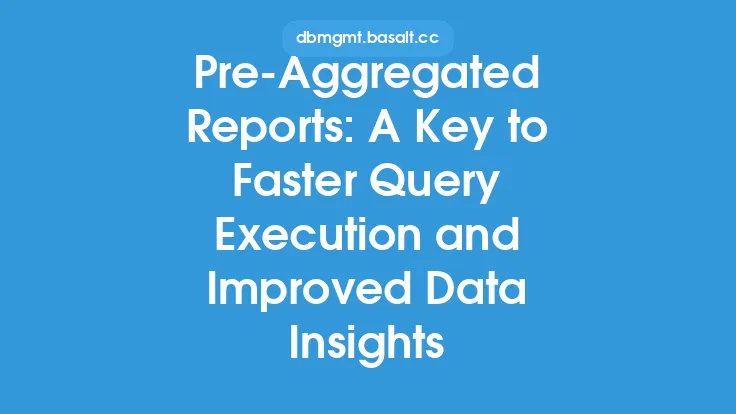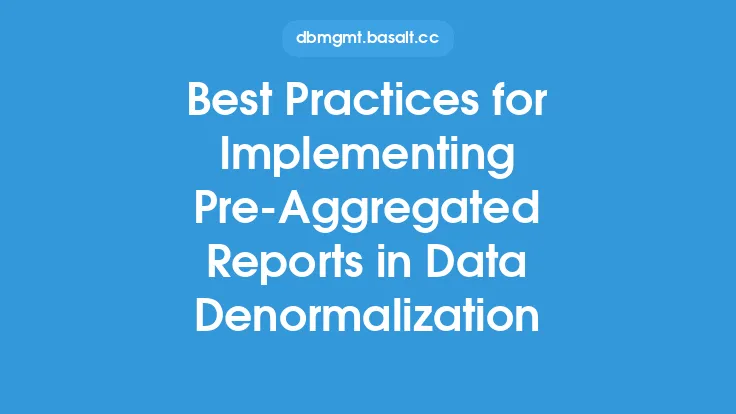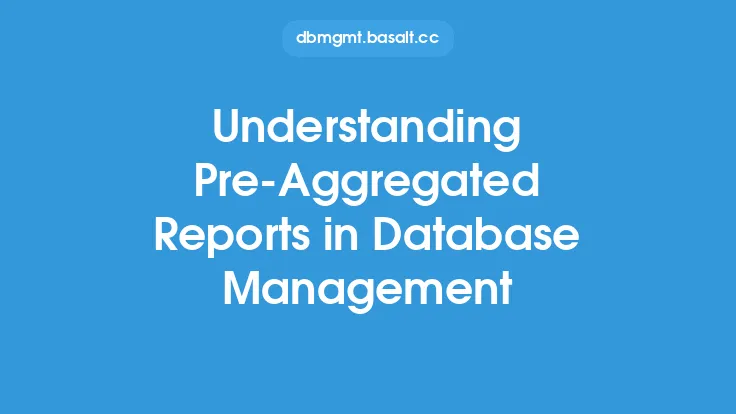In the realm of data analysis and business intelligence, the ability to efficiently process and understand complex data is crucial for making informed decisions. One technique that has gained significant attention in recent years is the use of pre-aggregated reports, which play a vital role in simplifying complex data queries and analytics. Pre-aggregated reports are essentially pre-computed summaries of data that are stored in a database, allowing for faster query execution and improved data insights.
Introduction to Pre-Aggregated Reports
Pre-aggregated reports are a type of data denormalization technique that involves pre-computing and storing aggregated data in a database. This approach is particularly useful when dealing with large datasets and complex queries, as it reduces the need for real-time calculations and improves query performance. By storing pre-aggregated data, users can quickly retrieve summarized information, such as totals, averages, and counts, without having to execute complex queries on the raw data.
How Pre-Aggregated Reports Simplify Complex Data Queries
Pre-aggregated reports simplify complex data queries by reducing the amount of data that needs to be processed. When a query is executed on a large dataset, the database must scan the entire dataset, perform calculations, and return the results. This process can be time-consuming and resource-intensive, especially when dealing with complex queries that involve multiple joins, subqueries, and aggregations. Pre-aggregated reports, on the other hand, provide a pre-computed summary of the data, allowing users to quickly retrieve the desired information without having to execute complex queries.
Benefits of Pre-Aggregated Reports for Data Analytics
Pre-aggregated reports offer several benefits for data analytics, including improved query performance, reduced computational overhead, and enhanced data insights. By storing pre-aggregated data, users can quickly retrieve summarized information, such as trends, patterns, and correlations, without having to execute complex queries on the raw data. This approach also enables users to perform ad-hoc analysis and explore different scenarios, without having to worry about the performance implications of complex queries.
Types of Pre-Aggregated Reports
There are several types of pre-aggregated reports, including rollup reports, drill-down reports, and data cubes. Rollup reports involve aggregating data at multiple levels, such as daily, weekly, and monthly, to provide a hierarchical view of the data. Drill-down reports, on the other hand, allow users to navigate from a high-level summary to a detailed view of the data. Data cubes, also known as OLAP (Online Analytical Processing) cubes, are a type of pre-aggregated report that stores data in a multidimensional array, allowing users to analyze data from different perspectives.
Design Considerations for Pre-Aggregated Reports
When designing pre-aggregated reports, there are several factors to consider, including data granularity, aggregation levels, and query patterns. Data granularity refers to the level of detail at which the data is stored, while aggregation levels refer to the level at which the data is summarized. Query patterns, on the other hand, refer to the types of queries that will be executed on the pre-aggregated data. By considering these factors, designers can create pre-aggregated reports that meet the needs of users and provide fast and efficient access to summarized data.
Implementation Considerations for Pre-Aggregated Reports
Implementing pre-aggregated reports requires careful consideration of several factors, including data storage, data refresh, and data maintenance. Data storage refers to the physical location where the pre-aggregated data is stored, while data refresh refers to the process of updating the pre-aggregated data to reflect changes to the underlying data. Data maintenance, on the other hand, refers to the process of ensuring that the pre-aggregated data remains accurate and up-to-date. By considering these factors, implementers can ensure that pre-aggregated reports are properly implemented and provide fast and efficient access to summarized data.
Conclusion
In conclusion, pre-aggregated reports play a vital role in simplifying complex data queries and analytics. By storing pre-computed summaries of data, users can quickly retrieve summarized information, such as totals, averages, and counts, without having to execute complex queries on the raw data. Pre-aggregated reports offer several benefits, including improved query performance, reduced computational overhead, and enhanced data insights. By considering design and implementation factors, such as data granularity, aggregation levels, and query patterns, designers and implementers can create pre-aggregated reports that meet the needs of users and provide fast and efficient access to summarized data. As data continues to grow in size and complexity, the use of pre-aggregated reports will become increasingly important for simplifying complex data queries and analytics.





